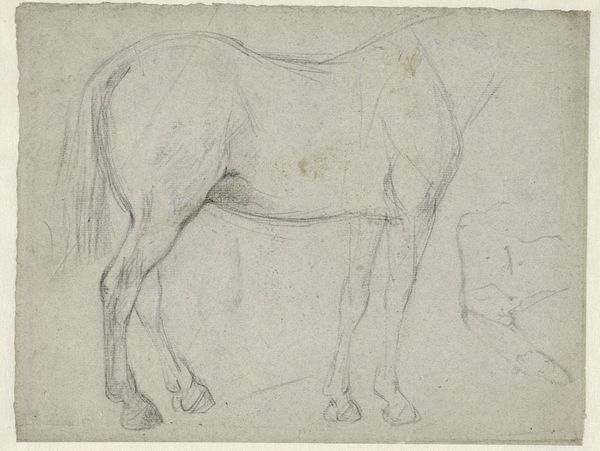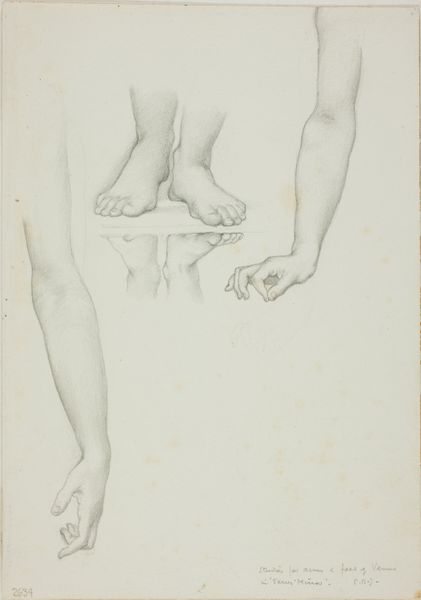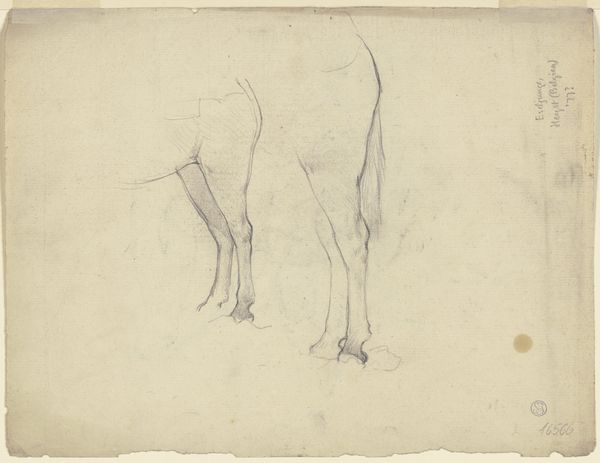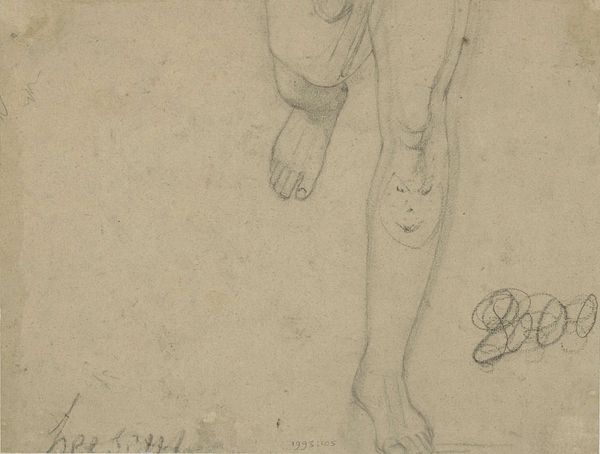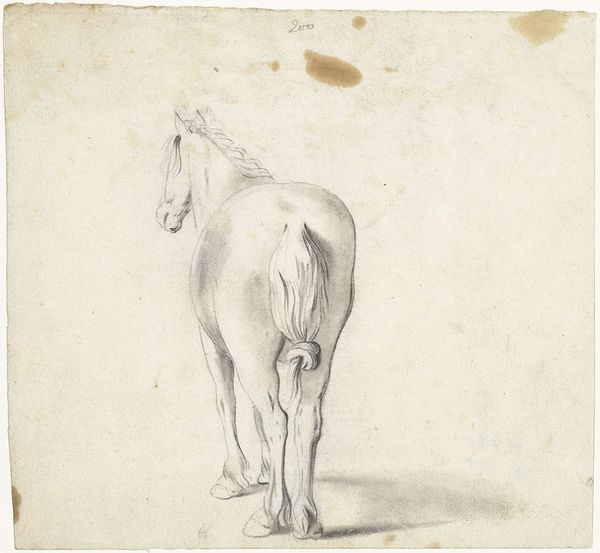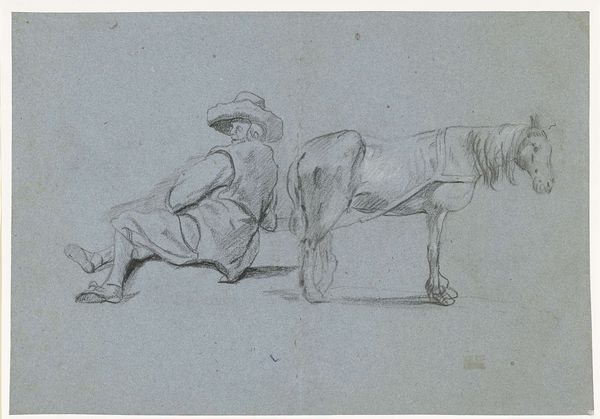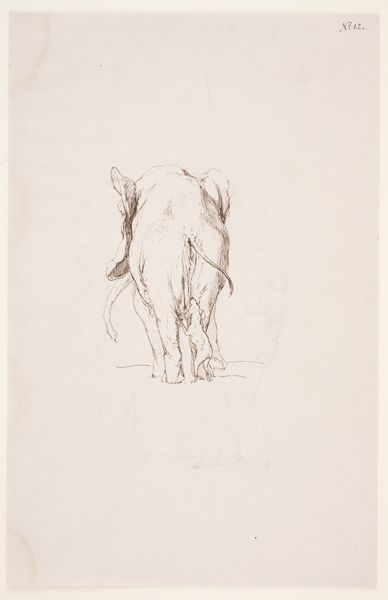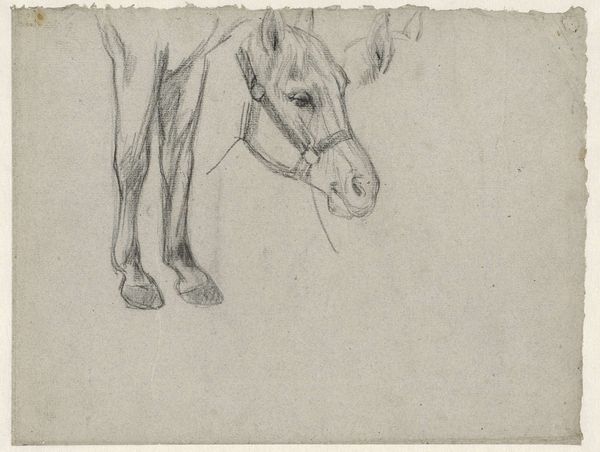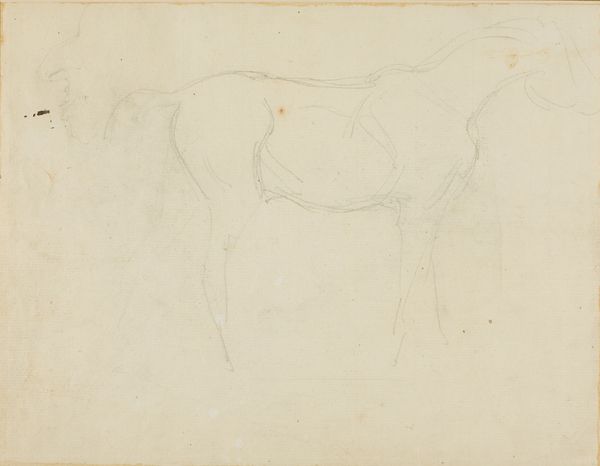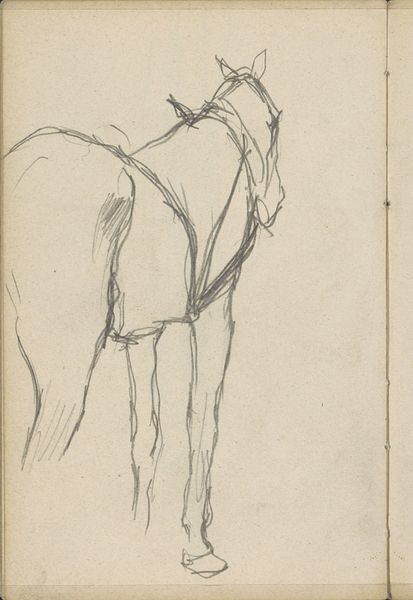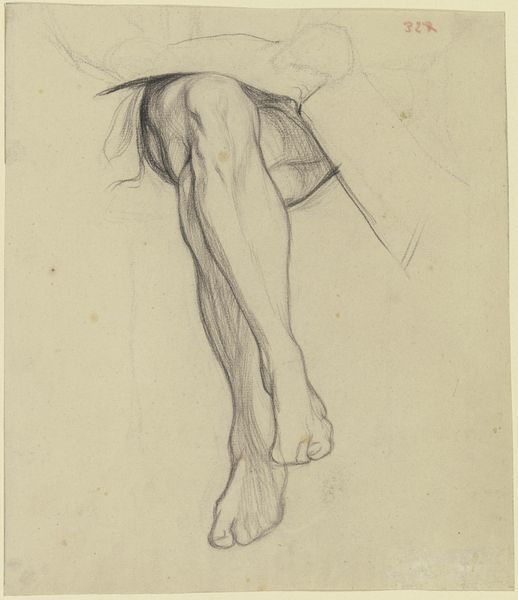
drawing, pencil
#
pencil drawn
#
drawing
#
animal
#
pencil sketch
#
form
#
pencil drawing
#
sketch
#
pencil
#
horse
#
sketchbook drawing
#
realism
Dimensions: height 235 mm, width 305 mm
Copyright: Rijks Museum: Open Domain
Curator: Looking at this pencil sketch, "Studies van een paard," dating from between 1855 and 1912, by Jan Kuyper, my first impression is one of arrested motion—it feels unfinished yet captures so much. Editor: Unfinished, yes, and precisely because of that, it captures potential. What draws me is the line work. The lightness of touch, the way Kuyper uses varying pressure to define form… there’s an elegance. What else do you see, formally speaking? Curator: It feels intentionally sparse. Given Kuyper's era, it's interesting to consider how this rendering relates to the changing role of the horse, not merely as a beast of burden, but increasingly symbolic of status and freedom. Editor: Absolutely, the realism is undeniable. But look closely: the anatomical studies almost resemble an architectural plan; a structure in lines, shadows defining shape and balance. It pushes beyond mere representation. There is also a philosophical undertone; each sketch explores distinct possibilities in its manifestation. Curator: Right. This could also engage conversations around labor, class and gender roles in Dutch society, specifically looking at how different demographics interacted with the animal—an upper class and the role of horses, farms that require them. And then it starts being this image that can spark further discussion. Editor: It also brings to mind the tradition of equine art throughout history— from antiquity to Stubbs. The rendering feels almost classical. By distilling it to line and form, stripping down ornament, perhaps that's the heart of its appeal? Curator: Seeing it now—through both our lenses—I feel an expanded understanding of Jan Kuyper's sketch, one that honors form and celebrates social history and human experiences reflected through the humble horse. Editor: Indeed! Analyzing it in layers like that brings new insight. It truly shows the artwork, no matter how simple in its form, holds multitudes.
Comments
No comments
Be the first to comment and join the conversation on the ultimate creative platform.

